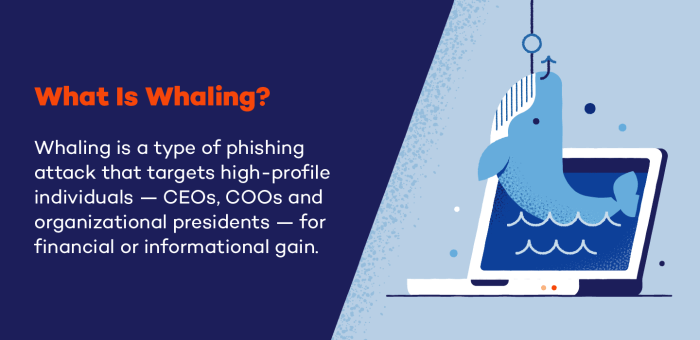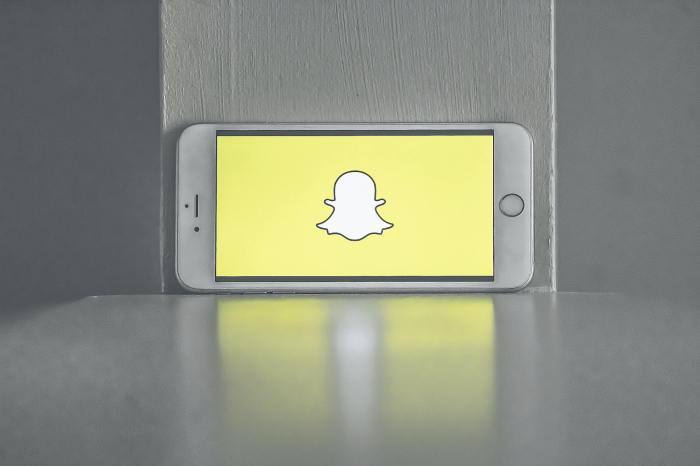Understanding the Vulnerability
A recent Snapchat vulnerability, now patched, had the potential to allow attackers to launch denial-of-service (DDoS) attacks against iPhone users. This vulnerability exploited a weakness in the way Snapchat handled certain network requests, which could be leveraged to overwhelm an iPhone’s resources and render it unusable.
Technical Details
The vulnerability stemmed from a flaw in Snapchat’s handling of UDP (User Datagram Protocol) packets. UDP is a connectionless protocol used for communication over the internet. The vulnerability allowed attackers to send specially crafted UDP packets to a victim’s iPhone, overwhelming its network processing capabilities. This could potentially cause the iPhone to become unresponsive or even crash, effectively rendering it unusable.
Potential Impact
This vulnerability could have had significant implications for iPhone users:
- Denial-of-Service Attacks: Attackers could have launched DDoS attacks, making iPhones inaccessible to their users. This could have disrupted communication, productivity, and access to essential apps and services.
- Data Leakage: While the primary impact was a denial of service, there was a potential for data leakage. If the attack overwhelmed the iPhone’s resources, it could have caused other apps to malfunction, potentially exposing sensitive data. This is because when an iPhone is overloaded, it can lead to crashes and unexpected behaviors in other applications, potentially causing sensitive data to be accessed or compromised.
DDoS Attacks and their Impact
DDoS attacks, short for Distributed Denial of Service attacks, are a type of cyberattack that aims to overwhelm a target server or network with traffic, rendering it unavailable to legitimate users. These attacks exploit vulnerabilities in systems and networks to disrupt normal operations and cause significant harm. In the context of iPhones, a DDoS attack could disrupt essential services, leading to service interruptions, data loss, or device instability.
Understanding DDoS Attack Mechanisms
DDoS attacks utilize a network of compromised computers or devices, known as a botnet, to launch coordinated attacks on the target. The botnet, controlled by the attacker, sends a massive amount of traffic to the target server, overwhelming its resources and preventing it from responding to legitimate requests. Imagine a small shop being flooded by a large crowd, making it impossible for customers to enter and purchase goods. This is similar to how a DDoS attack overwhelms a server, making it unresponsive to legitimate users.
Examples of Previous DDoS Attacks and their Consequences
Numerous high-profile DDoS attacks have occurred in recent years, impacting various organizations and individuals. One notable example is the attack on Dyn, a domain name system (DNS) provider, in 2016. This attack caused widespread outages for various websites and online services, including Twitter, Netflix, and Spotify, highlighting the potential impact of DDoS attacks on critical infrastructure. Another example is the attack on the website of the Ukrainian government in 2022, which coincided with the Russian invasion of Ukraine. This attack disrupted government services and demonstrated the use of DDoS attacks as a tool for cyberwarfare.
Potential Impact of DDoS Attacks on iPhone Users
A successful DDoS attack on iPhone users could result in several negative consequences. These include:
- Service Interruptions: Users might experience difficulties accessing online services, including app stores, streaming platforms, or social media applications. This can be frustrating and disrupt daily activities.
- Data Loss: In some cases, DDoS attacks can lead to data loss if the attack disrupts critical data storage or processing systems. While less likely for iPhones, this could be a concern if the attack targets specific iCloud services.
- Device Instability: Constant bombardment of traffic can lead to device instability, resulting in crashes, freezes, or slow performance. This can significantly hinder the user experience and make the device unusable.
Exploiting the Vulnerability for DDoS Attacks
The Snapchat vulnerability, if exploited, could be used to launch DDoS attacks against iPhones. These attacks could disrupt the normal functioning of the targeted devices, rendering them unusable or significantly impairing their performance.
Attackers could leverage this vulnerability by sending a large number of specially crafted requests to the targeted iPhone. These requests would overwhelm the device’s resources, causing it to become unresponsive or slow down significantly. This is similar to how a DDoS attack works on a website, but instead of targeting a server, it targets an individual device.
Targeting Specific Individuals or Groups
Attackers could target specific individuals or groups by exploiting this vulnerability. They could identify the target’s iPhone by its unique identifier (e.g., IMEI or MAC address) and then launch the DDoS attack. This could be used to disrupt communication, disable critical applications, or simply inconvenience the target. For example, an attacker could target a group of protesters by launching DDoS attacks against their iPhones, effectively disrupting their ability to communicate and coordinate their actions.
Mitigating the Risk: Snapchat Vulnerability Could Lead To Iphone Ddos Attacks
The Snapchat vulnerability that could lead to iPhone DDoS attacks poses a significant threat to users’ privacy and online experience. Thankfully, several steps can be taken to mitigate this risk, including security updates, best practices, and user awareness.
Security Updates and Patches
Snapchat and Apple are responsible for addressing this vulnerability and protecting their users. Here’s how they can do it:
- Snapchat: Snapchat needs to release a security patch that addresses the vulnerability in their app. This patch should fix the underlying code flaw that allows attackers to exploit the app and launch DDoS attacks.
- Apple: Apple should work with Snapchat to ensure that their operating system (iOS) is secure against this vulnerability. They could implement security measures that prevent malicious apps from accessing critical system resources, thus hindering DDoS attacks.
Best Practices for iPhone Users
While waiting for security updates, iPhone users can take proactive steps to protect themselves from DDoS attacks:
- Keep Apps Updated: Regularly update all your apps, especially Snapchat, to ensure you have the latest security patches.
- Strong Passwords: Use strong, unique passwords for all your online accounts, including Snapchat. Avoid using the same password for multiple accounts.
- Two-Factor Authentication: Enable two-factor authentication for your Snapchat account. This adds an extra layer of security by requiring a code from your phone in addition to your password when logging in.
- Be Wary of Links: Be cautious about clicking on links in messages or emails, especially if they seem suspicious. Malicious links can lead to malware infections or phishing attacks.
- Use a VPN: Consider using a Virtual Private Network (VPN) to encrypt your internet traffic and protect your privacy. This can help to prevent your IP address from being exposed to attackers.
Future Implications
The discovery of this vulnerability in a popular messaging app highlights the ongoing challenge of securing mobile platforms. This incident underscores the need for a proactive approach to mobile security, with a focus on anticipating and mitigating potential threats. This vulnerability serves as a stark reminder of the vulnerabilities inherent in mobile messaging apps and the broader implications for the security of mobile devices and user data.
Potential for Similar Vulnerabilities in Other Messaging Apps, Snapchat vulnerability could lead to iphone ddos attacks
The vulnerability exploited in this case highlights the potential for similar flaws to exist in other messaging apps and mobile platforms. As developers rush to implement new features and functionalities, security often takes a backseat, leaving vulnerabilities open for exploitation. The use of similar messaging protocols and codebases across different platforms increases the risk of similar vulnerabilities emerging in other apps.
Broader Implications for the Security of Mobile Devices and User Data
This vulnerability raises concerns about the broader security landscape of mobile devices and the protection of user data. Mobile devices are increasingly becoming central to our lives, storing sensitive information like financial data, personal communications, and location data. This vulnerability underscores the need for robust security measures to protect this data from unauthorized access and exploitation.
Improving the Security of Mobile Messaging Platforms
The vulnerability exposes the need for a comprehensive approach to mobile messaging security, encompassing various aspects:
- Regular Security Audits: Frequent and thorough security audits of mobile messaging apps are crucial to identify and address vulnerabilities before they can be exploited.
- Secure Coding Practices: Developers must prioritize secure coding practices, adhering to industry standards and best practices to minimize the risk of introducing vulnerabilities.
- End-to-End Encryption: Implementing strong end-to-end encryption ensures that only the intended recipient can access messages, protecting data from interception and unauthorized access.
- Vulnerability Disclosure Programs: Establishing clear and transparent vulnerability disclosure programs encourages responsible reporting of security flaws, allowing developers to address them promptly.
- User Education: Raising awareness among users about mobile security threats and best practices is essential to empower them to protect their devices and data.
Snapchat vulnerability could lead to iphone ddos attacks – The discovery of this Snapchat vulnerability serves as a stark reminder that even the most popular and seemingly secure apps are not immune to security flaws. It highlights the importance of constant vigilance and proactive security measures to protect our digital lives. As technology continues to evolve, so too will the methods of cyberattacks, demanding that we remain informed and adapt to the ever-changing landscape of online threats. The responsibility lies with both app developers and users to ensure that our devices and data are secure, and that our online experience remains safe and uninterrupted.
Hold up, your iPhone’s not just vulnerable to annoying glitches like a hissing sound – it could actually be under attack. A new Snapchat vulnerability could lead to a DDoS attack, which basically means hackers could overload your phone with requests, making it lag or crash. Talk about a major buzzkill, right?
 Standi Techno News
Standi Techno News

